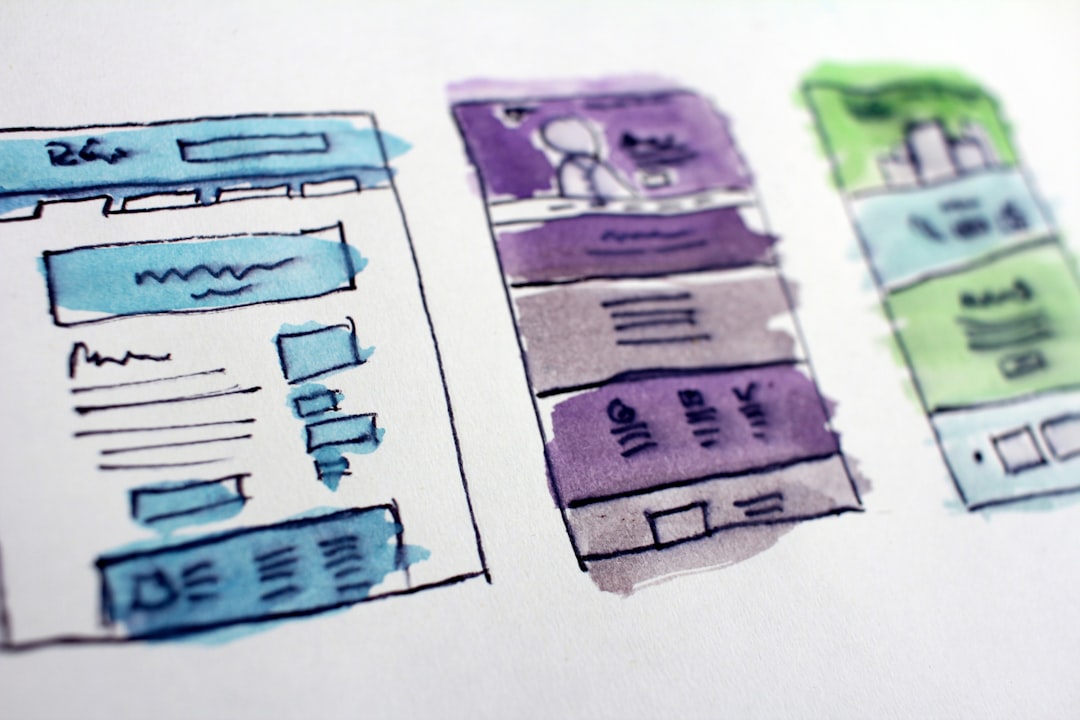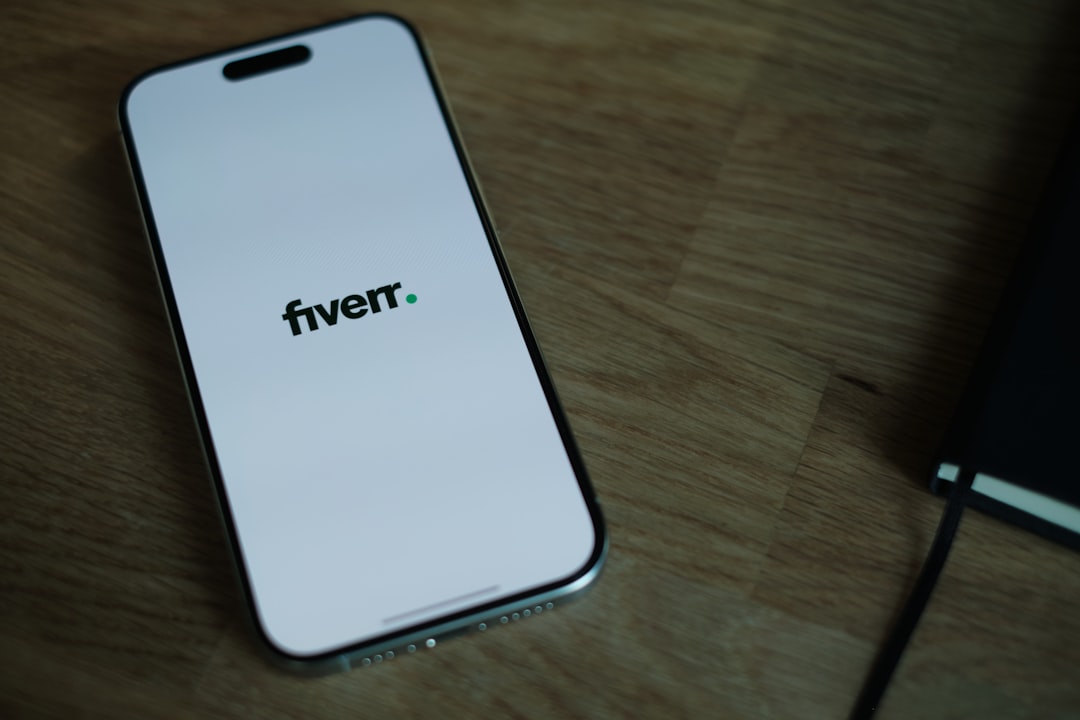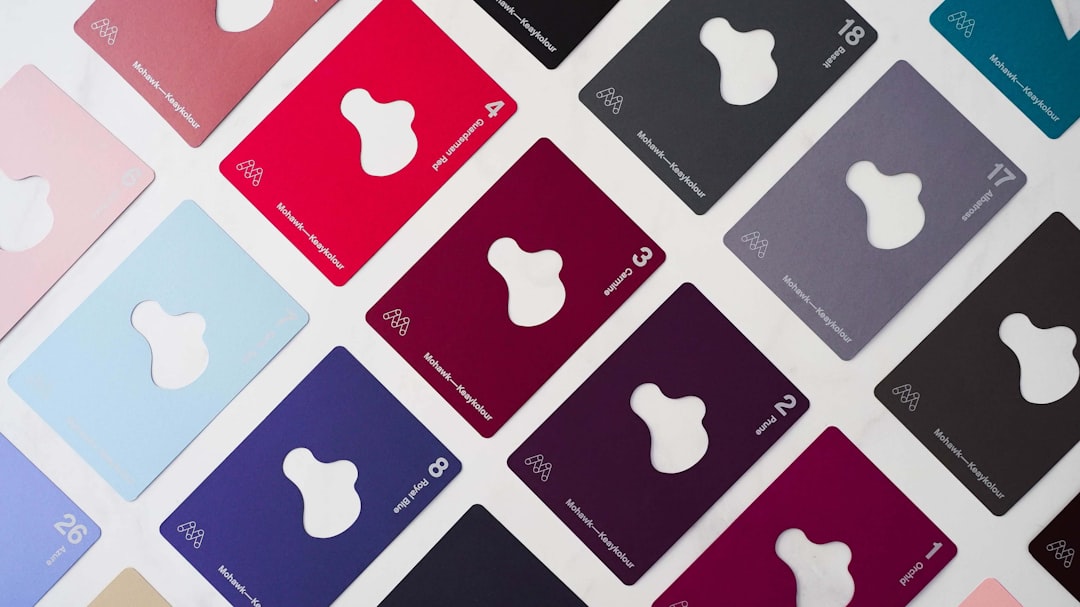7 success secrets for a perfect landing page
Discover 7 success secrets for a perfect landing page. Optimize your landing page design and increase conversion with these tips!

Why a perfect landing page is crucial
A perfect landing page is much more than just a decorative element of your website — it is at the heart of your digital marketing strategy. When we target potential customers, we want to ensure that web visitors not only get to our site, but also stay on the site, engage and take a specific action. This includes, for example, buying a product, filling out a form, or downloading a document. At its core, the landing page is the key to turning traffic into measurable results.
What makes up the meaning?
There are several reasons why optimizing a landing page is so important:
- First impressions count: We know that visitors decide whether to stay on a page or leave it within a few seconds. A well-designed landing page creates trust and attracts attention.
- Clear objective: Each landing page has a specific goal. Whether signing up for a newsletter or buying a product — clear calls to action ensure a smooth process.
- Measurable data: Through a well-optimized landing page, we can obtain important data, such as conversion rates, length of stay and click behavior. These help us to constantly improve our campaigns.
What are the key components?
A perfect landing page combines several key elements:
- A compelling headline: It immediately conveys what it is about and addresses the pain points or interests of our target group directly.
- Visual components: We integrate images and videos that are relevant and of high quality to arouse emotions and reinforce the message.
- Clearly structured content: Important information is kept short, easy to read and focuses directly on added value.
- CTAs (CTAs): These must be eye-catching and targeted in order to move the visitor to the desired next step.
By specifically designing a landing page, we give our potential customers a well-thought-out user experience that creates trust and leads to measurable results. Without an optimally adapted landing page, the success of our marketing strategy is at risk. Every minute invested in optimising them pays off in the long term.
Understanding the target group: The key to success
In order to design a perfect landing page, we first need to gain in-depth knowledge about our target group. Only when we understand their wants, needs, and problems can we create a page that delivers relevant content and compelling messages. This starts with analyzing their demographics, interests, and behavior patterns. It's important to hit the language and tone that works best for them.
Why target group knowledge is essential
The target group determines how we need to design our landing page. Whether it's about colors, layout, or text content, all of these factors should adapt to the preferences of our target group. Without this understanding, we run the risk of creating a universal site that does not create an emotional connection to visitors. A landing page should be designed in such a way that the user immediately feels addressed and understood.
Practical steps for analyzing the target group
To understand our target audience effectively, we can take the following steps:
- Data collection: We use tools such as Google Analytics, customer interviews or market studies to collect facts about the target group.
- Develop personas: Let us create specific user profiles that reflect the central characteristics and needs of customers.
- Get feedback: To find out whether our messages are received and effective, we can conduct surveys or A/B tests.
How we implement the knowledge
Understanding the target group doesn't just mean collecting data, but actively incorporating it into the design and strategy of our landing page. We adapt the language of the content, focus on their specific needs and offer clear calls to action that are directly tailored to their motivations. In this way, we turn our landing page into a digital sales representative who optimally addresses the target group.
By focusing on the user, we create a page that is convincing and delivers results.
Key elements of a compelling headline
An optimal headline is the first and most important step in attracting visitors' attention. For it to work effectively on a landing page, it must be clear, inviting and meaningful at the same time. We should consider a few key factors that characterize a successful headline.
- Clarity and precisionA good headline conveys at first glance what the user can expect from the page. We should avoid using ambiguous or confusing phrases as this could reduce attention.
- Relevance for the target groupOur headline must speak the language of our target audience. That means we should focus on their needs, challenges, or wishes. A direct message such as “you” or “your” can also increase relevance.
- A strong value propositionFor the headline to be compelling, it should emphasize the advantage or outcome that the visitor is getting. Statements such as “Double your sales figures” or “Simply timeless — your best choice” attract attention.
- Emotional speechEmotions arouse interest. Phrases that convey curiosity, enthusiasm, or urgency can work wonders. However, we should ensure that these emotions remain authentic and don't seem excessive.
- Scarcity and readabilityAn effective headline is as short as possible and as long as necessary. Visitors should be able to understand them easily within a few seconds. Avoiding technical jargon and using clear language is critical.
- Visual assistanceThe design and position of a headline significantly influence its effect. We should make sure that font size, color, and placement are eye-catching without disrupting the overall look of the page.
However, a compelling headline alone isn't enough. We should ensure that the underlying content and overall landing page structure consistently support this message.
The role of clear and concise content
When we talk about the perfect landing page, one thing is always at the center: clear and concise content. It is crucial that we deliver the message without detours in order to attract visitors' attention and quickly convince them of our offer.
Effective communication on a landing page requires that we focus on the essentials. Every sentence, heading, and section should serve a clear purpose. Long, nested texts act as a deterrent and can lead visitors to leave the site before they recognize the value of our offer.
Characteristics of clear and concise content:
- uniqueness: We should make sure that our message is easy to understand. Technical terms or complicated wording should be avoided as far as possible.
- Focus on added value: People are interested in how they benefit from our offer. We should therefore focus on the specific benefits we offer.
- Short and structured presentation: Bullet points or numbered lists can help to present information quickly and clearly.
We should also ensure that the content complies with the principles of Storytellings follow. A short, compelling story or an emotionally appealing introduction can spark interest and curiosity. Visitors want to feel picked up, and a clear focus on their needs makes our message all the more powerful.
Finally, visual structure is a decisive factor. Headlines, subheadings, and targeted highlighting (such as bold) help make our content easy to understand and tell visitors what's next.
Visual design: How layout and colors create trust
A compelling visual design is one of the keys to creating trust and credibility with visitors. We know that first impressions often count, and they are created within a few seconds of loading a landing page. Layout and colors play a decisive role here.
The page layout must have a clear and intuitive structure. We should ensure that important information, such as headlines, call-to-actions (CTAs), and visual elements, is organized logically. An overloaded or messy setup can scare off potential customers. We therefore recommend using sufficient white space to improve readability and create visual silence.
Colors influence how visitors perceive our brand. Warm shades such as red or orange often evoke emotions such as urgency or energy, while cool colors such as blue signal trust and professionalism. We should design the color palette so that it reflects our brand identity and is harmonious at the same time. The contrast between text and background is essential to make content easy to read.
In addition, the use of consistent design elements looks professional. Recurring patterns, such as uniform typography or the repeated use of a brand logo, create familiarity. We should also ensure that high-quality images and graphics are available and present our product or service authentically.
We must remember that visual design is not just about aesthetics. It supports user navigation, increases the conversion rate and strengthens emotional ties. With targeted design decisions, we let our landing page speak for itself.
Call-to-action: The power of a clear call to action
An effective call-to-action (CTA) is at the heart of a successful landing page. It gives our visitors clear instructions and ensures that they know exactly which next step is required. To maximize the effectiveness of our CTA, there are a few important things to consider.
1. Clarity and simplicity
We must ensure that our call to action is concise and without ambiguity. Instead of vague terms such as “continue,” we use more specific phrases such as “try now for free” or “buy a product.” Clear words help our visitors understand more quickly what is expected.
2nd Visual emphasis
Our CTA should stand out in terms of design and be easy to find. We achieve this through contrasting colors, larger buttons and a prominent position on the page, for example above the fold or immediately after a convincing product description.
3rd Create urgency
To promote decision-making, we can use time pressure or exclusivity. Phrases such as “Only available today” or “Limited places available” motivate people to act quickly. However, we should refrain from excessive urgency as it is more likely to disappoint our audience.
4th Emphasize added value
Our call-to-action should always communicate a clear advantage for the user. For example, if we combine “Register now” with “... and try it free for 30 days”, we increase the attractiveness of the campaign.
5th Consistency across the entire landing page
We should include multiple but consistent CTAs in various places on the landing page. This gives our visitors multiple opportunities to take action without overwhelming them.
An optimally placed and well-formulated CTA is the key to getting more conversions from our landing pages.
The importance of social proof and customer reviews
In order to gain the trust of our visitors and motivate them to take action, we must use social proof in a targeted manner. Studies show that potential customers are far more likely to make a decision when they see that others have already had positive experiences. Social proof is a psychological principle that describes how people use others' behavior as a guide.
One of the most effective forms of social proof is customer reviews. These reviews give us the opportunity to make real, credible opinions and experiences visible. When we present authentic reviews, such as through star ratings, written testimonials or video feedback, visitors feel understood and gain confidence in our offering. It is important that the reviews are specific and comprehensible — generic or purchased reviews quickly have a counterproductive effect.
We can integrate various types of social proof into our landing page, including:
- customer reviews: Let's place them prominently, ideally with the customer's name, photos and, if applicable, the customer's company.
- Additional data: Let's show figures such as the number of satisfied customers or downloads to substantiate our credibility.
- Case studies: Detailed success stories provide potential customers with concrete examples.
- Seal of approval or awards: Certificates create trust and highlight our reputation.
- Opinions from influencers and experts: Positive reviews from well-known personalities often have a strong effect.
A smooth transition between our product offering and embedded references can amplify the impact. In doing so, we should ensure that the design is clear and concise in order to optimally attract visitors' attention. Social proof not only helps us to strengthen trust, but also reduces buying barriers and ultimately increases the conversion rate.
SEO tips: How to make your landing page discoverable
In order for potential customers to find your landing page, we need to ensure that it is both optimized for search engines and appealing to users. A well-thought-out SEO strategy not only increases visibility but also improves user experience.
1. Use relevant keywords
We should specifically include the key terms that our target group uses to search for our products or services. We strategically place these keywords in headlines, meta descriptions, page content and image alt texts. Tools such as Google Keyword Planner or Ubersuggest help us with keyword research.
2nd Optimize meta tags and descriptions
Meta titles and descriptions are essential because they give the first impression in search results. A clear title with a primary keyword and an appealing description with call-to-action increase the click rate.
3rd Prioritize mobile optimization
Since the majority of users search via mobile devices today, we ensure that the landing page is responsive. Quick charging time and user-friendly navigation on smartphones and tablets are essential.
4th Deliver high-quality content
Search engines reward websites with relevant and valuable content. That's why we create content that answers our target group's questions and provides additional added value. Visual elements such as videos and infographics also increase attractiveness.
5th Include internal and external links
Good networking increases the SEO impact. By setting internal links to important sub-pages and building high-quality backlinks through partnerships or content marketing, we strengthen the authority of the landing page.
6th Optimize performance and load time
Search engines like Google prefer fast pages. We make sure to compress images, eliminate unnecessary scripts, and use caching to minimize load time. Tools like PageSpeed Insights help us analyze performance.
7. Implement structured data
With rich snippets, such as schema markups, we make it easier for search engines to understand our content. This ensures better rankings and increases the likelihood of being highlighted in search results.
A combination of all of these factors enables us to significantly increase the visibility of our landing page and improve the user experience at the same time.
Technical aspects: charging speed and mobile friendliness
The technical performance of a landing page plays a decisive role in its success. Slow load times can scare users off and significantly affect the conversion rate. We therefore need to ensure that our sites work quickly and efficiently, particularly for mobile devices, which are increasingly being used.
Loading speed optimization
A fast loading speed is essential, as visitors usually have no patience for slow pages. Here are a few strategies we can use to improve load times:
- Compress images: Large media files should be optimized through compression without sacrificing quality. Tools such as TinyPNG or JPEGmini are ideal for this.
- Enable caching: By caching page content, returning users can experience faster load times.
- Minimize code: CSS, JavaScript, and HTML should be written cleanly and concisely. Unnecessary code increases load time.
- Optimize server performance: Fast servers and modern technologies such as content delivery networks (CDNs) help deliver data efficiently.
Focus on mobile-friendliness
Since mobile devices account for a large part of traffic, our landing page must be intuitive to use on every device. To that end, we should take the following measures:
- Apply responsive design: Our content must automatically adapt to different screen sizes.
- Usability testing: Regular tests on smartphones and tablets help identify potential problems.
- Inclusion of touchscreen features: Control elements should be large enough for touch inputs to ensure a positive user experience.
- Mobile-first approach: We should prioritize the mobile version when designing and developing the site.
Pro tip: Both loading speed and mobile-friendliness have a direct impact on search engine optimization (SEO). Fast and mobile-friendly sites are preferred by Google, which ultimately leads to higher organic traffic.
By combining technical improvements and targeted mobile friendliness, we can ensure that our landing page not only convinces users, but also works flawlessly — regardless of how they access it.
Analyze and continuously optimize performance
To make a landing page really successful, we should regularly analyze and systematically optimize its performance. We have various tools and methods available to do this, which give us insights into visitor interactions and general behavior on the site.
Effective analysis starts with collecting appropriate data. We can use tools such as Google Analytics or Hotjar use to record key metrics such as bounce rate, time spent, and click-through rate on specific call-to-actions (CTAs). With this data, we identify vulnerabilities that could prevent potential users from converting.
Another step is to run A/B testing. Here, we test different variants of elements such as headings, color design or writing style against each other. This iterative testing helps us make data-driven decisions and find out exactly which changes deliver the best results.
In addition, we should rely on qualitative user feedback. Visitor surveys or direct feedback from users can often give us specific insights into problems or wishes that we would not recognize based on quantitative data alone.
Optimizations should be a continuous process. Changes in the market, in the target group or in search engine algorithms require regular adjustments. Here, it is important to constantly test new improvement measures and to evaluate the results.
Finally, we should ensure that the loading times and mobile responsiveness of the landing page are always checked. These technical factors have a direct impact on the conversion rate and are essential for the sustainable success of our site.





